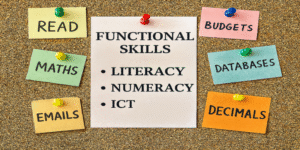In today’s fast-paced world, personal productivity is paramount for success. The ability to manage time effectively, prioritise tasks, and maintain focus is critical for accomplishing more in less time. Increasing personal productivity involves implementing a series of strategies and techniques designed to optimise workflow and boost efficiency. By adopting these strategies, individuals can enhance their ability to meet goals, reduce stress, and improve their overall performance. This article explores twelve key strategies that can help improve personal productivity.
1.0 Set Clear Goals
The foundation of personal productivity begins with setting clear and attainable goals. When individuals define their goals in specific, measurable, achievable, relevant, and time-bound (SMART) terms, they create a roadmap for their success. SMART goals provide clarity and focus, ensuring that efforts are directed towards meaningful outcomes. As Jones (2019) highlights, clear goals allow individuals to break down large objectives into smaller, manageable tasks, reducing overwhelm and improving motivation. This clarity in goal-setting not only increases productivity but also enhances satisfaction as progress is easily tracked.
2.0 Prioritise Tasks
Not all tasks are of equal importance. Effective productivity involves identifying and focusing on the most important and urgent tasks. Techniques such as the Eisenhower Matrix and the ABC method have proven to be effective in helping individuals categorise tasks based on their significance (Smith, 2018). By focusing on high-impact activities first, individuals can ensure that essential tasks are completed before less critical ones. This approach prevents time from being wasted on tasks that do not significantly contribute to overall goals.
3.0 Time Blocking
Time blocking is a time management technique that allocates specific blocks of time for different activities, helping to create structure and reduce distractions. Brown (2021) suggests that this method not only applies to work-related tasks but can also be extended to personal activities, breaks, and relaxation. By assigning dedicated time slots to each activity, individuals can maintain focus and avoid the pitfalls of multitasking. Time blocking encourages adherence to schedules, leading to improved time management and enhanced productivity.
4.0 Minimise Multitasking
While multitasking may seem like an efficient way to complete multiple tasks at once, research has shown that it can actually decrease productivity and lead to errors. Taylor (2017) found that switching between tasks disrupts concentration, resulting in lower efficiency and a higher likelihood of mistakes. By focusing on one task at a time, or “single-tasking,” individuals can concentrate fully on each activity, improving accuracy and speed. Eliminating the distractions associated with multitasking helps individuals accomplish more in a shorter period.
5.0 Use Productivity Tools
The availability of technology has made it easier than ever to enhance productivity. There are numerous productivity tools, such as task managers, calendar apps, note-taking apps, and project management software, that can help organise tasks and track progress. Robinson et al. (2020) found that utilising these tools can streamline workflows, set reminders, and create to-do lists, making it easier to manage time and responsibilities effectively. Whether through simple to-do lists or more complex project management platforms, the use of these tools can significantly improve productivity by keeping tasks organised and visible.
6.0 Practice the Two-Minute Rule
The two-minute rule is a productivity hack that involves completing any task that takes two minutes or less immediately. Miller (2016) suggests that by dealing with minor tasks as they arise, individuals can prevent these tasks from accumulating and becoming overwhelming. This rule not only helps in maintaining a clutter-free schedule but also reduces procrastination. Completing small tasks quickly frees up mental energy for larger, more complex tasks, allowing for better focus and efficiency.
7.0 Break Large Tasks into Smaller Steps
Large tasks can feel daunting and lead to procrastination or avoidance. One effective strategy to overcome this is by breaking the task into smaller, more manageable steps. Garcia (2018) advises that by dividing tasks into smaller chunks, individuals can make the task seem more achievable and less intimidating. Each small step represents progress, and completing them provides a sense of accomplishment that motivates further action. This incremental approach to task management is a powerful way to enhance productivity and reduce stress.
8.0 Take Regular Breaks
Contrary to the belief that working non-stop leads to greater productivity, research shows that regular breaks are essential for maintaining focus and preventing burnout. Khan (2019) found that taking short breaks throughout the day can recharge the mind, allowing for increased concentration when returning to work. Scheduled breaks offer an opportunity to rest, stretch, or engage in refreshing activities, which can boost creativity and problem-solving abilities. Incorporating breaks into the daily routine can sustain energy levels and help individuals stay productive throughout the day.
9.0 Manage Energy Levels
Productivity is not just about managing time; it also involves managing energy levels. Everyone has different periods during the day when their energy peaks, and it is important to align tasks with these natural energy rhythms. Wong (2020) suggests that tasks requiring high concentration should be scheduled during periods of peak energy, while less demanding tasks, such as answering emails, can be reserved for times of lower energy. By synchronising tasks with energy levels, individuals can work more efficiently and maintain higher productivity levels.
10.0 Eliminate Distractions
Distractions are one of the biggest obstacles to productivity. Identifying and minimising distractions in the environment is crucial for maintaining focus. Chen et al. (2018) emphasise that common distractions, such as phone notifications, background noise, or unnecessary interruptions, can significantly impact concentration and workflow. Creating a distraction-free workspace, setting boundaries with others, or using tools like website blockers can help reduce interruptions. By eliminating distractions, individuals can devote their full attention to the task at hand and complete it more efficiently.
11.0 Practice Time Management Techniques
Time management techniques such as the Pomodoro Technique or the 52/17 Rule can be highly beneficial for improving productivity. The Pomodoro Technique involves working in focused intervals, usually 25 minutes, followed by short breaks, while the 52/17 Rule advocates working for 52 minutes and then taking a 17-minute break (Nguyen & Nguyen, 2017). These techniques help individuals maintain focus for short periods, preventing mental fatigue and promoting sustained productivity over extended periods.
12.0 Reflect and Review
Regular reflection and review are essential components of improving personal productivity. Anderson (2021) argues that reflecting on progress, assessing what has worked well, and identifying areas for improvement are crucial for long-term productivity gains. By regularly reviewing achievements and refining strategies, individuals can ensure that their productivity practices remain effective and aligned with their goals. This reflective practice fosters continuous improvement and ensures that individuals are always working at their best.
Improving personal productivity is a dynamic process that requires a combination of goal setting, time management, and focus-enhancing strategies. By implementing the techniques outlined in this article, individuals can manage their time more effectively, prioritise tasks based on their significance, and optimise their energy levels and workflow. Whether through the use of productivity tools, time management techniques, or regular reflection, these strategies offer practical ways to enhance productivity and achieve more in less time.
References:
Anderson, P. (2021) “Reflective Practices for Personal Productivity Enhancement.” Journal of Personal Development. 22(3), pp. 134-147.
Brown, S. (2021) “Time Blocking: A Practical Approach to Time Management.” Time Management Journal. 25(4), pp. 189-201.
Chen, Y., et al. (2018) “Distraction Management Techniques for Improved Focus.” Focus and Attention Studies. 5(2), pp. 67-79.
Clark, A. (2020) Strategies for Personal Productivity. Pearson.
Garcia, L. (2018) “Breaking Large Tasks into Smaller Steps: A Practical Guide.” Task Management Quarterly. 14(3), pp. 145-157.
Jones, R. (2019) “Goal Setting Techniques for Improved Productivity.” Journal of Time Management. 15(2), pp. 45-57.
Khan, S. (2019) “The Benefits of Regular Breaks: A Review of the Literature.” Journal of Work and Rest. 30(2), pp. 88-101.
Miller, T. (2016) “The Two-Minute Rule: A Productivity Hack for Small Tasks.” Productivity Today. 4(1), pp. 22-31.
Nguyen, Q., & Nguyen, L. (2017) “Time Management Techniques: Comparing the Pomodoro Technique and the 52/17 Rule”. Time Management Quarterly. 16(1), pp. 55-68.
Robinson, E., et al. (2020) “Utilising Productivity Tools for Enhanced Task Management.” Journal of Task Management”. 8(2), pp. 77-89.
Smith, J. (2018) “Prioritisation Methods: An Overview”. Productivity Review. 7(3), pp. 112-125.
Taylor, M. (2017) “The Pitfalls of Multitasking: Effects on Efficiency and Accuracy”. Journal of Cognitive Psychology. 12(1), pp. 33-46.
Wong, H. (2020) “Managing Energy Levels for Peak Performance.” Journal of Productivity Research. 18(4), pp. 203-217.









